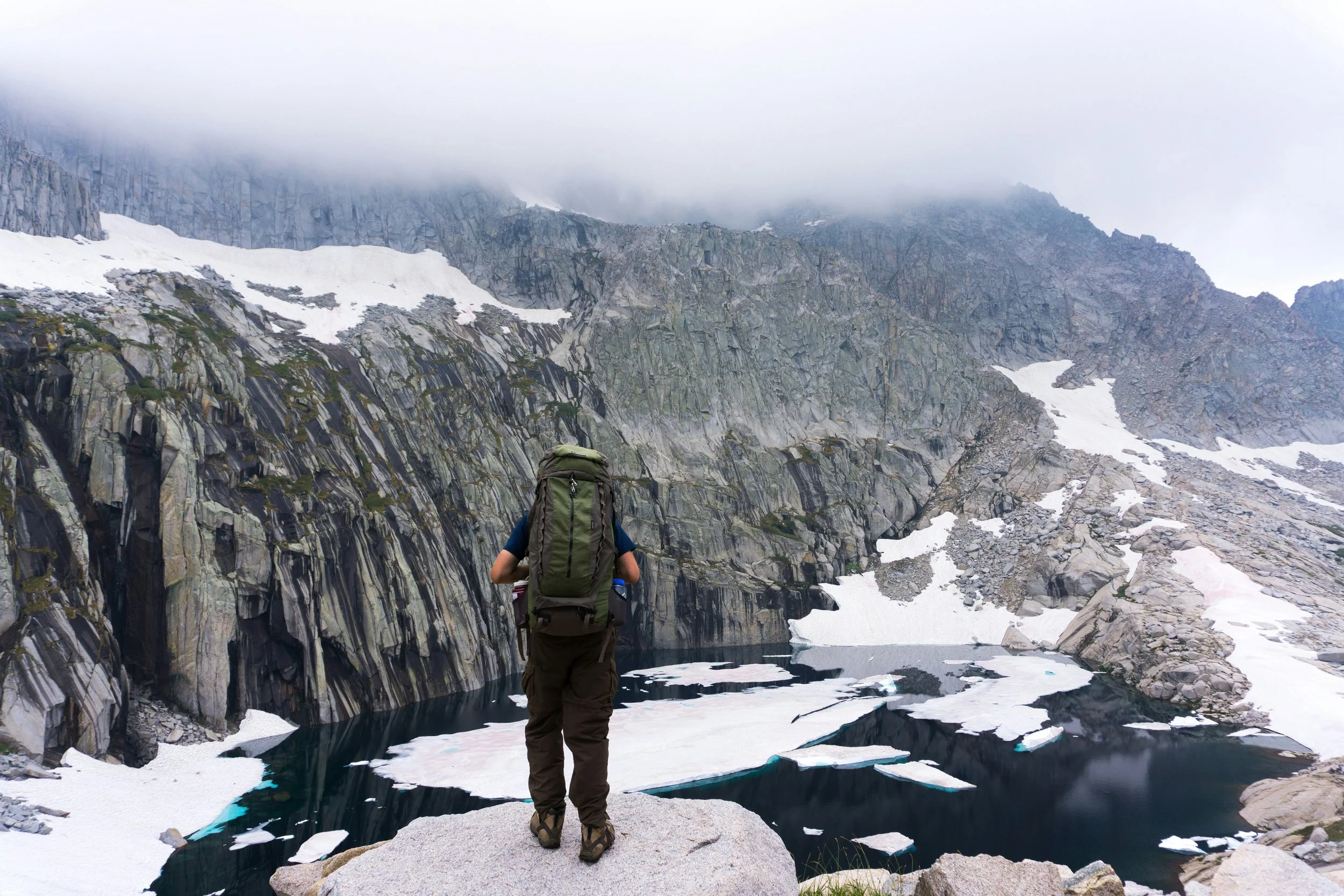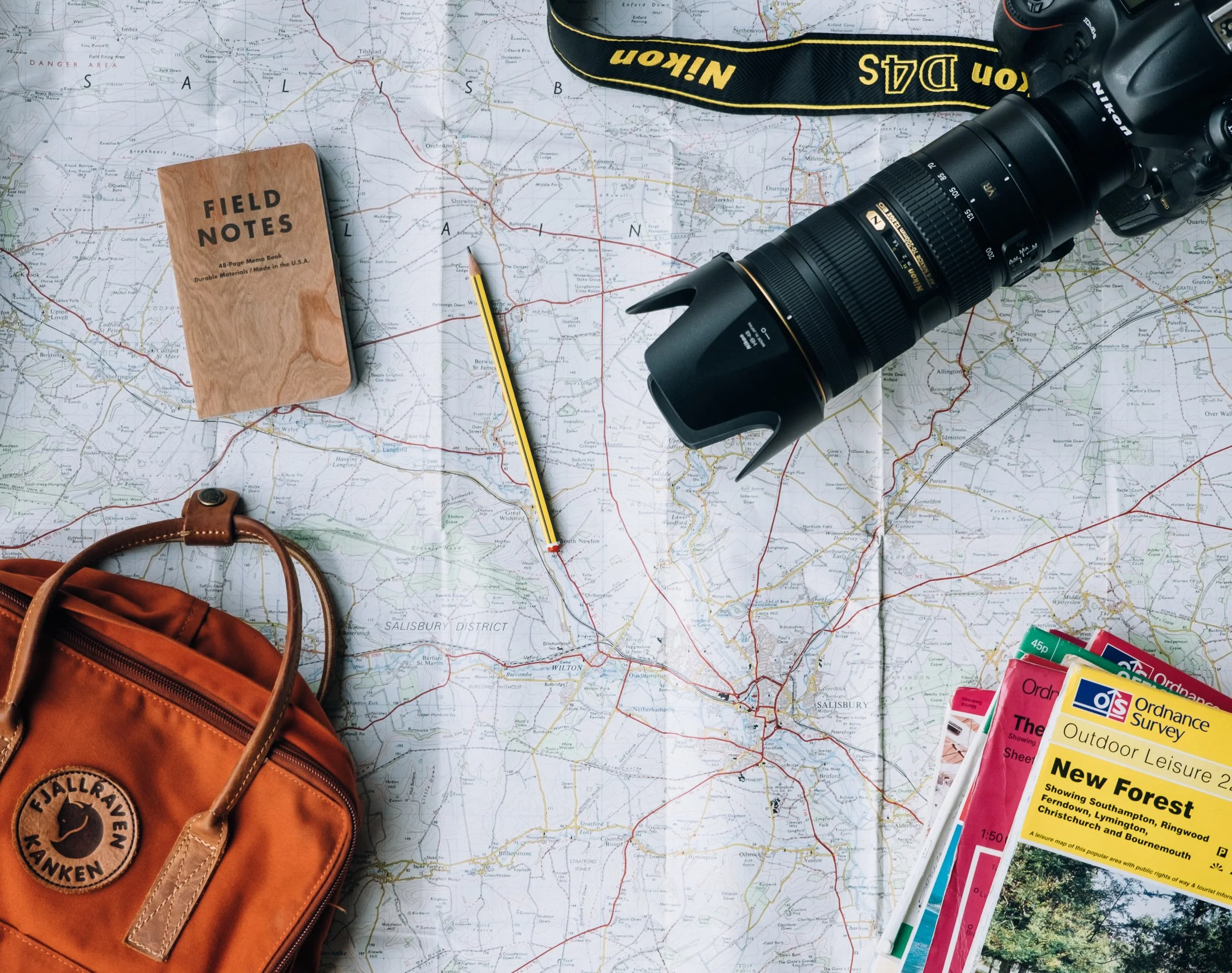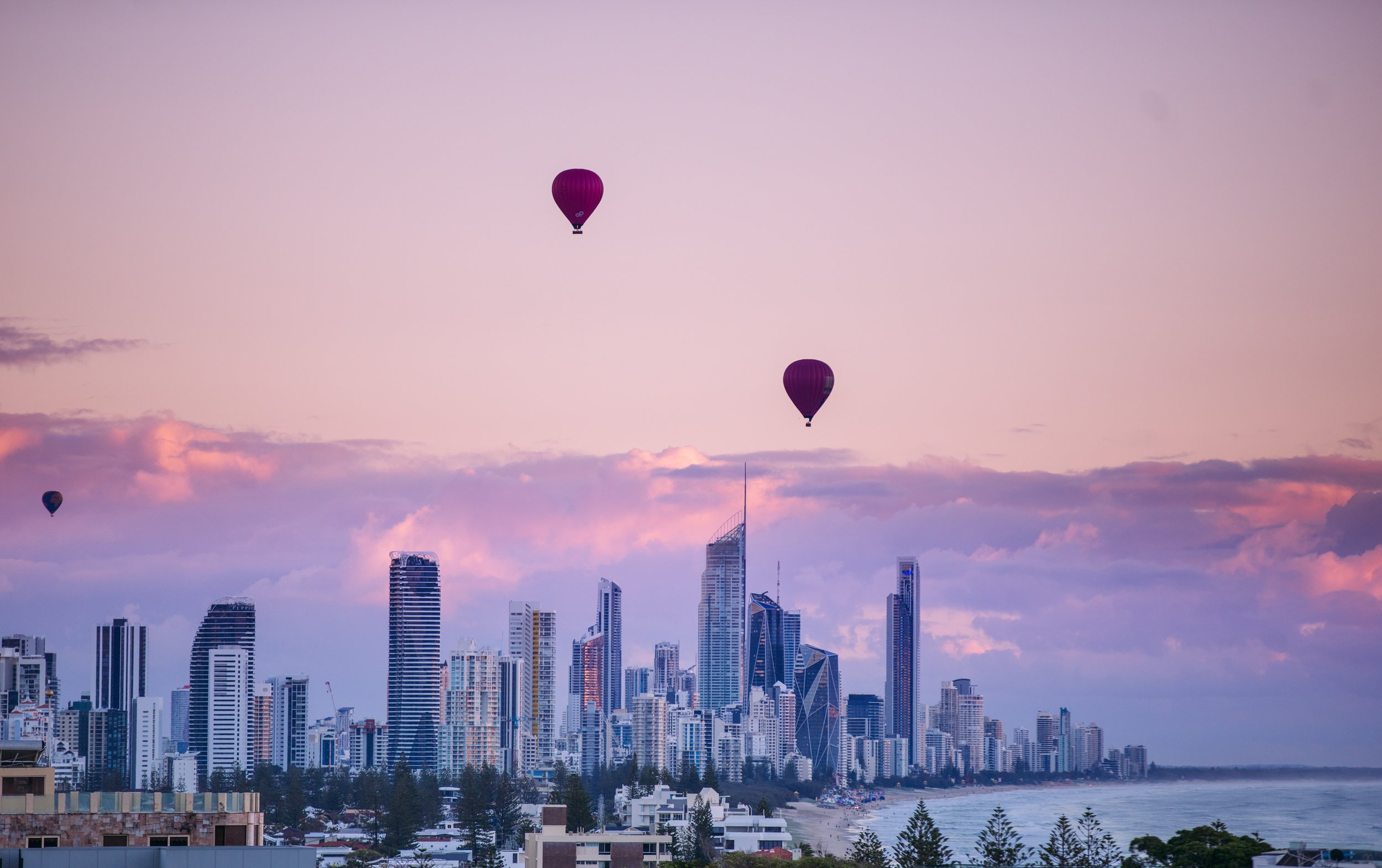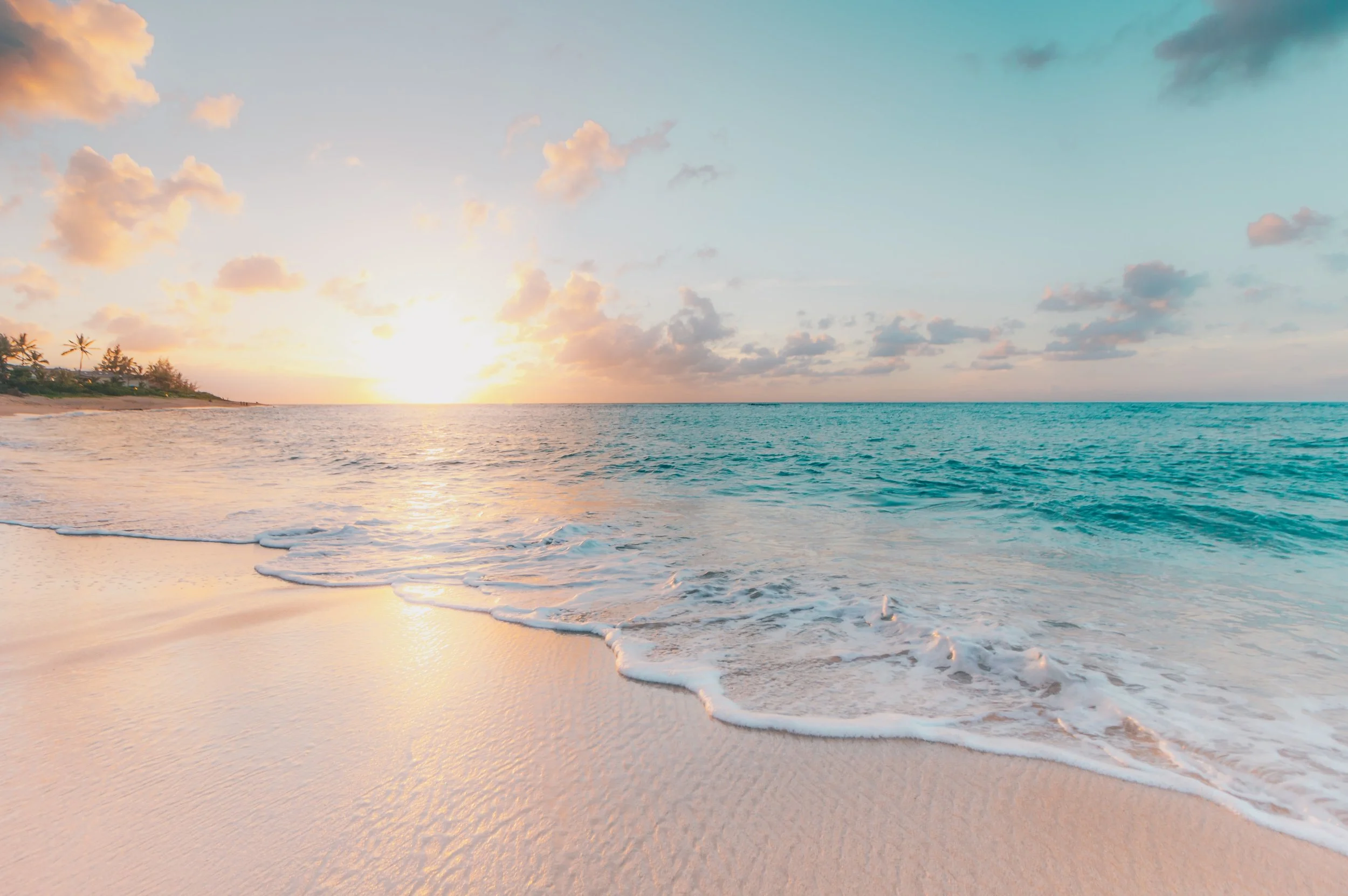Visas are a pain! We have not gotten used to them, even after 18 months of travel. Thanks to leaving our visa business to last minute or not checking properly the documents we submitted, we had to rebook a flight, and also change the way we were getting from Nepal to India from overland to flying. But you gotta do what you gotta do - you need to deal with visas whenever you travel. And usually it's simple (or at least it sounds this way!) - you're getting your visa online or at the border.
GETTING VISA AT THE BORDER
Laos and Cambodia border, on Cambodia's side with the orange building (the border) in the back. Interesting collection of stuff, isn't it?!
Getting a visa at the border is our preferred method whenever it is possible.
Almost every country we have been to has had some sort of 'Visa on Arrival' scheme (except Vietnam, and, India if you want to cross overland), so most often you don’t have to worry too much about organising visas in advance. Crossing borders by land can be a little bit daunting, and we have had mixed experiences. There always seems to be tension in the air around a border and a whole lot of ‘what should I actually be doing’ going on. People who work at the borders aren’t usually the most friendly (who would be after sitting in a small cubicle for the day and dealing with sweaty tourists...) and sometimes they will try to take advantage of you.
How long does it take to cross the border overland?
There are always two steps involved when crossing a land border - getting stamped out of the country you are leaving, and then being admitted to your next country.
Exiting a country is a relatively easy process and usually takes about 5-10 minutes to complete (if there is no one else around), but can take up to 30 minutes - 1 hour, if it is busy.
Entering your next country can take anywhere from 10 mins to 5 hours or even more! There are many factors that can affect the time it takes to be admitted - Are there lots of people? Are you entering a country with a more strict government? Have there been issue in the country recently (think what happens in London when there has been any sort of attack in Europe - the security doubles and checks become a lot more thorough!) ?
In all the borders we've crossed, and countries we've entered, the most frustrating is still trying to get into the UK!
We got our East African Tourist visa at the Kenya-Uganda road border at 2:30AM without any hassle! We were pleasantly shocked at how easy it was. And Ethiopia to Kenya border was the most quiet and the easiest border we've ever crossed.
Quick Story
When we crossed the Laos-Cambodia border, we got a not-so-friendly officer. He blatantly stole $15 right in front of us and when we questioned him he suddenly didn’t speak English anymore and literally pretended that we didn’t exist. We gave him a bigger note and he just decided to not give us the change! It wasn't a big amount of money but it annoyed us that the guy took something that didn't belong to him. It was very frustrating at the time but we couldn't just make a scene at the border. This taught us to always have the exact change needed to buy your visas.
APPLYING ONLINE FOR A VISA
Zach planning our visas and life away!
When applying online, it is important to first work out whether you're actually on the government website and not some third party site. Lots of travel companies have their own visa application forms that look very similar to the government portals and it can be very easy to apply for a visa through them. You will most likely still get the appropriate visa that you need, but you will definitely be charged extra for their ‘services’.
There are a couple of downsides of applying online. Usually they take at least a few days to be approved and you always have to print something off. Both of these are time wasting exercises and add unnecessary stress - did we fill the form in correctly? Did it actually send off? Where's my confirmation? And the list goes on.
Some countries require you to upload a portrait photo that is different to what your home country sets as the standard. And, often they only accept very small files. We had a couple of issues trying to upload a passport sized photo that was too large a file size and the wrong dimensions for an online application to India. We needed a photo that is less than 200kb and was square dimensions - nothing that a quick Photoshop trick wouldn't fix, but with the speed of the Internet in Nepal, it was very time-consuming to even get the visa application to open, not to mention uploading 200kb all over again...
We only really use online application when we have no other choice. Online visa portals are a long process (even if it lasts 3 days - we think it's kind of long) and often require you to give the name of your second aunt's, next door neighbours, middle child's pet rabbit's name, or something along those lines! And not too mention how often they crash (or don't load fully) and you have to do the whole process again as you often can't push 'back' on your browser.
OVERSTAYING YOUR VISA
The Nepalese departure card recognises more than two genders, how cool is that?!
Overstaying your visa can be risky, and we don’t recommend it. We accidentally did this with our Laos visas (we miscalculated the dates) and had to pay $5 per day we overstayed. Not a big deal, but we felt so nervous at the border. We were lucky and didn't have any problems with leaving, but, we've read horror stories about travellers overstaying in countries like Vietnam though - like they were detained for two days (the extreme version) or the officers made it difficult for them to leave the country (the lighter version)!
If you are planning on taking the risk and overstaying, then our advice is to try and find forum posts or blog posts about people sharing their experiences, to know what you can expect.
Quick Story
When we were about to head to Vietnam, we knew that we would need to organise our visas in advance. For the extra $5 each, we decided to use a travel agent in Siem Reap, Cambodia, to organise them for us. They took our passports and returned them the next day with the Vietnamese visas. All good - we thought. Until we checked the dates. Our visas were due to start the next day even though we weren’t heading to Vietnam for another week or so. This meant that our visas would expire before our flight out of the country. As a result we had to change our flights to three days earlier (since we couldn’t get new visas) and wasted a bunch of money because of an easily avoidable mistake. We are now even more vigilant with checking dates and making sure our visas will be valid for the entire time we are spending in a country.
THINGS TO KNOW WHEN CROSSING A BORDER
Zach in the train from Nairobi to Mombasa, just after we crossed Ethiopia and Kenya border
Know a Hotel
Having an address and phone number for a hotel in the capital city of the country you are visiting is always useful. When you fill in your visa application, it often asks where you will be staying, but doesn’t really require any proof. We google a hotel with a known name and use their details for this section on most occasions.
An Onward Ticket
If you are asked to show an onward ticket, it is totally fine to let them know that you will be exiting by land. We have done this multiple times and never had any problems in saying that we will be exiting the country by bus. Otherwise, you can also book a flight on a third party website that has a free cancellation included within 24 or 48 hours. You can show your email at the border and then cancel the flight after crossing in to the country.
Have US Dollars
Paying in US dollar at the border is always the best option. Usually they 'don't have change' so it is useful to have the exact money to hand over to the officer.
Be patient and calm
Prepare yourself for a long wait, and then you will be pleasantly surprised, if you are processed quickly. Answer all the ridiculous questions (like, e.g.: Officer: 'Why are you going to Kigali?'; Me: 'To see what it's like'; Officer: 'Why?'; Me: 'Because I've never been there') of the officers with a smile on your face.
Stand Your Ground & Don't mind the people
Queuing for things in an orderly fashion isn't a strong point of some countries and people will blatantly try and push in front of you. Try not to get frustrated and know that the second you step out of line (or leave the smallest gap) the person behind/near you will quickly sneak their way in!
Be Organised
Pretty standard, but have your passport in your hand and any other documents you need (visas, yellow fever card, etc.) to help speed up your entry or exit. Some border officers aren't the most honest and will try to charge you a few dollars here and there for not having the right form or health check on you - even though it's really not needed. It doesn't happen often though.
VISA REQUIREMENTS IN CENTRAL, SOUTH EAST ASIA
& EAST AFRICA
Here is some general information about visas to the countries that we have visited. For more information and to check the accuracy, head to a government website of a country.
Nepal
Single Entry Tourist Visa - Available online and at Kathmandu Airport on arrival.
15 days = 20 USD
30 days = 40 USD
90 days = 100 USD
India
Single, multiple entry and eVisa - We advise to get an e-Visa before arriving.
Double entry on e-Tourist Visa is permitted.
60 Days = 50 USD
Sri Lanka
Single entry eTA visas available online and at Colombo airport.
30 days = 30 USD
Malaysia
Citizens from the Commonwealth, European Union & USA do not require a visa for a stay up to 90 days.
Thailand
Single entry tourist visa available online and at designated entry points.
30 days = 30 USD
Laos
Single entry tourist visa available online and at designated entry points.
30 days = 30-42 USD
Cambodia
Single entry tourist visa available online and at designated entry points.
30 days = 30 USD (can be extended another 30 days of and additional 45 USD)
Vietnam
Visa must be organised in advance.
30 days = approx. 45 USD (20 USD for visa + 25 USD stamping fee)
We organised our Vietnamese visas whilst in Cambodia and had a travel agent send our passports off for processing.
Ethiopia
Single entry tourist visa available online and at designated entry points.
1 month = 50 USD
3 month = 75 USD
East Africa Tourist Visa (Kenya - Rwanda -Uganda)
This gives you the freedom of movement through Kenya, Uganda and Rwanda. You can enter and leave these three countries as many times as you like.
3 months = 100 USD
Alternatively, each country offers their own single entry tourist visa.
1 month = 50 USD for single entry
We understand why there needs to be visas and border control, but one day we hope that freedom of movement will be something that becomes more accessible. Many countries are starting to work together to come up with multi-country visas. Kenya, Uganda & Rwanda offer a $100 East Africa Visa that allows you to move freely between the three countries as many times as you like for 3 months at a time. We hope more countries will go this way!
Did you like it? Pin it!
